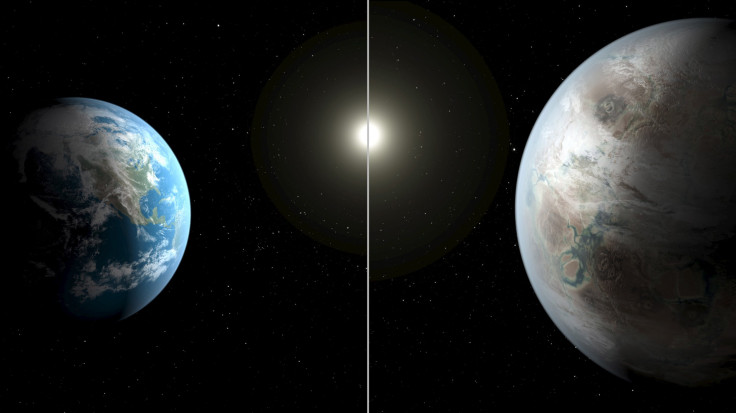NASA’s Kepler Spacecraft Discovers Closest Earth-Like Planet On A ‘Habitable Zone’

The National Aeronautics and Space Administration, or NASA, reported the discovery of the first Earth-like planet orbiting its star in the "habitable zone." The exoplanet, found by the Keplar spacecraft, was defined by NASA as "Earth's bigger and older cousin" as it is 60 percent bigger and 1.5 billion years older than our planet.
The exoplanet, called Kepler-452b, named after the spacecraft that led to its discovery, was found orbiting a sun-like star in the habitable zone of a possible solar system. The habitable zone, according to NASA, is the area around a star where life-sustaining liquid water is possible to stay on the surface of an orbiting planet, or simply the distance between Earth and its sun.
The Earth-like planet was found farther from its star than Earth is distant to the sun, according to Jon Jenkins, leader of the team that discovered the exoplanet at NASA's Ames Research Center. However, Jenkins stated the there is a possibility the planet could sustain life. The Kepler exoplanet's host star has the brightness that can give the planet the same amount of energy which Earth gets from the sun.
The report indicated the exoplanet was estimated to exist for six billion years, which Jenkins considered to increase the possibility of it to sustain life. The span of the year that the planet orbited around the habitable zone may developed its nature for living organisms and vegetation. However, NASA stated further studies need to be done to confirm the possibility.
"It's awe-inspiring to consider that this planet has spent 6 billion years in the habitable zone of its star; longer than Earth. That's substantial opportunity for life to arise, should all the necessary ingredients and conditions for life exist on this planet," Jenkins said.
NASA also found the new exoplanet as a "super-Earth-size planet" because it is 60 percent larger than the young Earth. The Kepler-452 system is located 1,400 light-years away in the constellation Cygnus. But the two planets have a very similar number of days to orbit its star, NASA scientists said. The exoplanet orbits its star for 385 days close to Earth's 365-day a year.
"We can think of Kepler-452b as an older, bigger cousin to Earth, providing an opportunity to understand and reflect upon Earth's evolving environment," Jenkins stated.
The Kepler team conducted ground-based observations to confirm the findings, including the planetary nature and exact size of the exoplanet and to determine the size and brightness of its star. The confirmation of the presence of the Earth-like planet increased the total number of confirmed actual exoplanet candidates by 1,879.
Along with the discovery were 12 new planet candidates orbiting in habitable zone with diameters between one to two times that of Earth. NASA added nine of the planets have stars similar to our sun in size and temperature.
The Kepler mission was launched by NASA in 2009 to specifically survey the Milky Way galaxy to discover Earth-like planets in or near the habitable zone and search each stars in our galaxy that might have planets.
A new planet-hunting satellite called TESS, according to a report, will explore the galaxy to provide more detail on the size, mass and atmospheres of planets circling distant stars in 2017. Then the following year, NASA plans to launch the James Webb Space Telescope will provide clear data on other planet's color, seasonal differences, weather and potential presence of vegetation.
To contact the writer, email: darwin.malicdem@ibtimes.tunemedia.biz




















